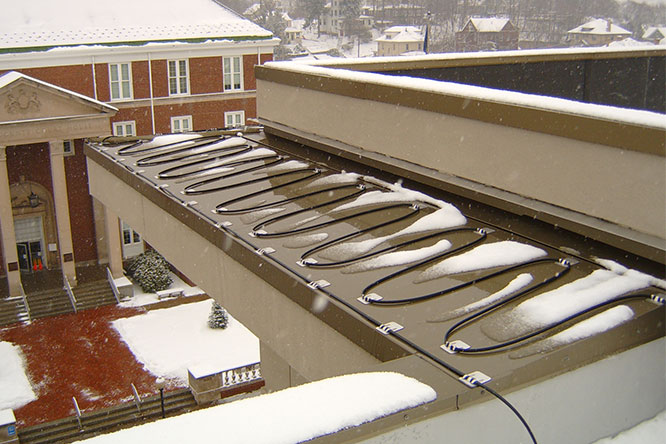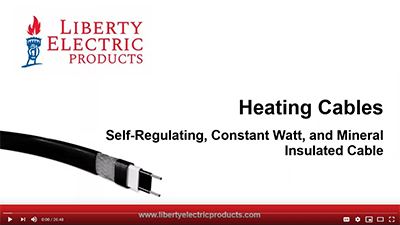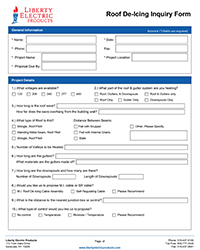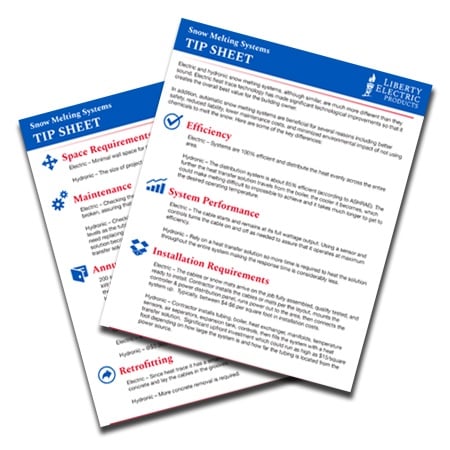Supporting Upstate New York, NY Metro, Long Island, New Jersey, and New England
Roof and Gutter Deicing Cables
LEP can design and specify an electrical heat tracing system to prevent ice dams from forming on roofs and gutters of residential homes and commercial buildings to prevent building damage. Ice dams can cause water ingress into a roof, physical damage to the structure, or a safety hazard due to ice falling onto unexpected pedestrians below.
Key Takeaways
- Heat trace systems prevent ice dams that can cause structural damage, water ingress, and safety hazards by keeping meltwater flowing off roofs and through gutters and downspouts.
- Self-regulating heating cables adjust output based on temperature, enhancing energy efficiency while maintaining safe, effective ice control across various roof types and climates.
- Proper system design and installation are critical. Cable selection, layout (zigzag, valley, gutter, or embedded), and experienced setup ensure performance and reliability.
- Aluminum flashing systems like Edge-Cutter® reduce cable usage by up to 75% while maintaining aesthetics and efficiency in deicing metal or shingled roofs.
- A complete gutter and downspout setup is essential - without it, meltwater can refreeze at the roof’s edge, causing ice buildup where the heat trace ends.
There are several ways to create effective solutions to eliminate ice dams - from laying the heat trace cables directly in gutters and downpipes, to the traditional zigzag pattern that is installed on the edge of the roof line, to the newer technology of inserting heat cable into metal panels that can install on the roof itself or under the shingles of a roof. These systems are effective on all different type of roof styles including flat roofs, sloped roofs, shingled roofs, membrane roofs, and standing seam roofs.
Most of the systems are installed with self-regulating cable along with a thermostat or control unit that can measure both temperature and moisture. This provides maximum energy efficiency because the system operates only when necessary and the cable automatically adjusts its power output to compensate for temperature variations. Many of our deigns have been used for commercial buildings since we incorporate state-of-the-art control systems and connection kits as part of our design service making these systems ideal for buildings in light to heavy snow load areas.
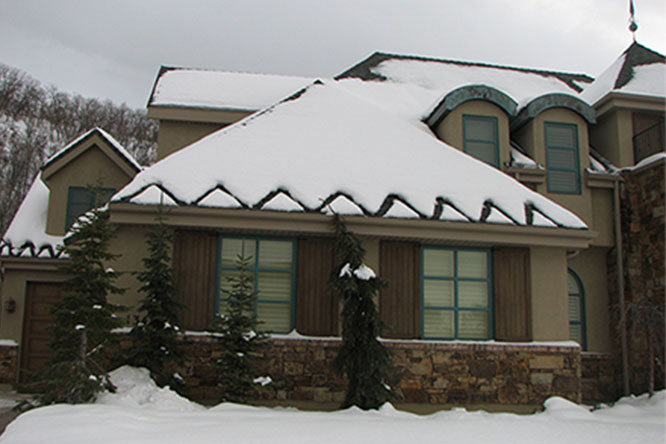
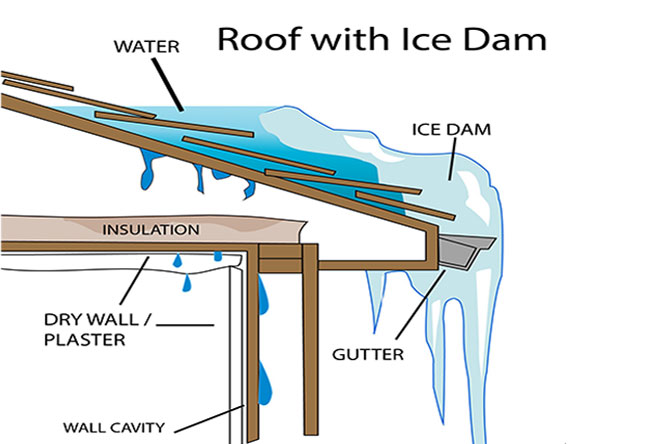
The integrity of an electric heat trace roof and gutter system depends upon on how accurately the cable is selected and how well it is installed. An improperly designed and installed trace heating system could result in the system not performing the way the end user requires. Our decades of expertise will ensure that your system meets your design needs and is installed properly.
Self-Regulating Electric Heating Cable
Self-regulating electric heating cable is perfect for heating your roof and/or gutter as it is designed to maintain temperatures up to 150°F (65°C) and can withstand temperatures up to 185°F (85°C). It is used for commercial and residential applications for metallic and non-metallic roofs, downspouts, and gutters.
Available in 120/208/240 volts and 5 or 8 watts/ft., self-regulating heating cable increases heat output as temperature decreases and, conversely, decreases heat output as temperature increases which makes this ideal for energy efficient roof and gutter applications. Industrial series cables contain two parallel bus wires electrically connected by a web of PTC (positive temperature coefficient) conductive polymer, with a fluoropolymer overjacket which has UV inhibitors that protect against damage from the sun.
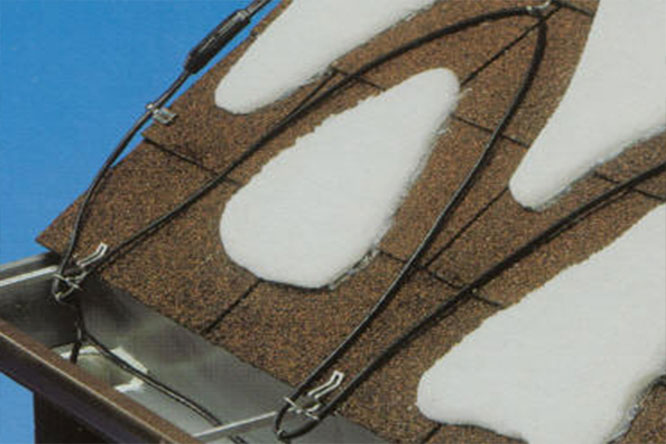
Gutters
Ice may accumulate in gutters and on the roof edge. To maintain a continuous path for melt water to run off we will design the system to route the cable using one run in gutters up to 6 inches wide and two parallel runs on gutters 6 to 12 inches wide.
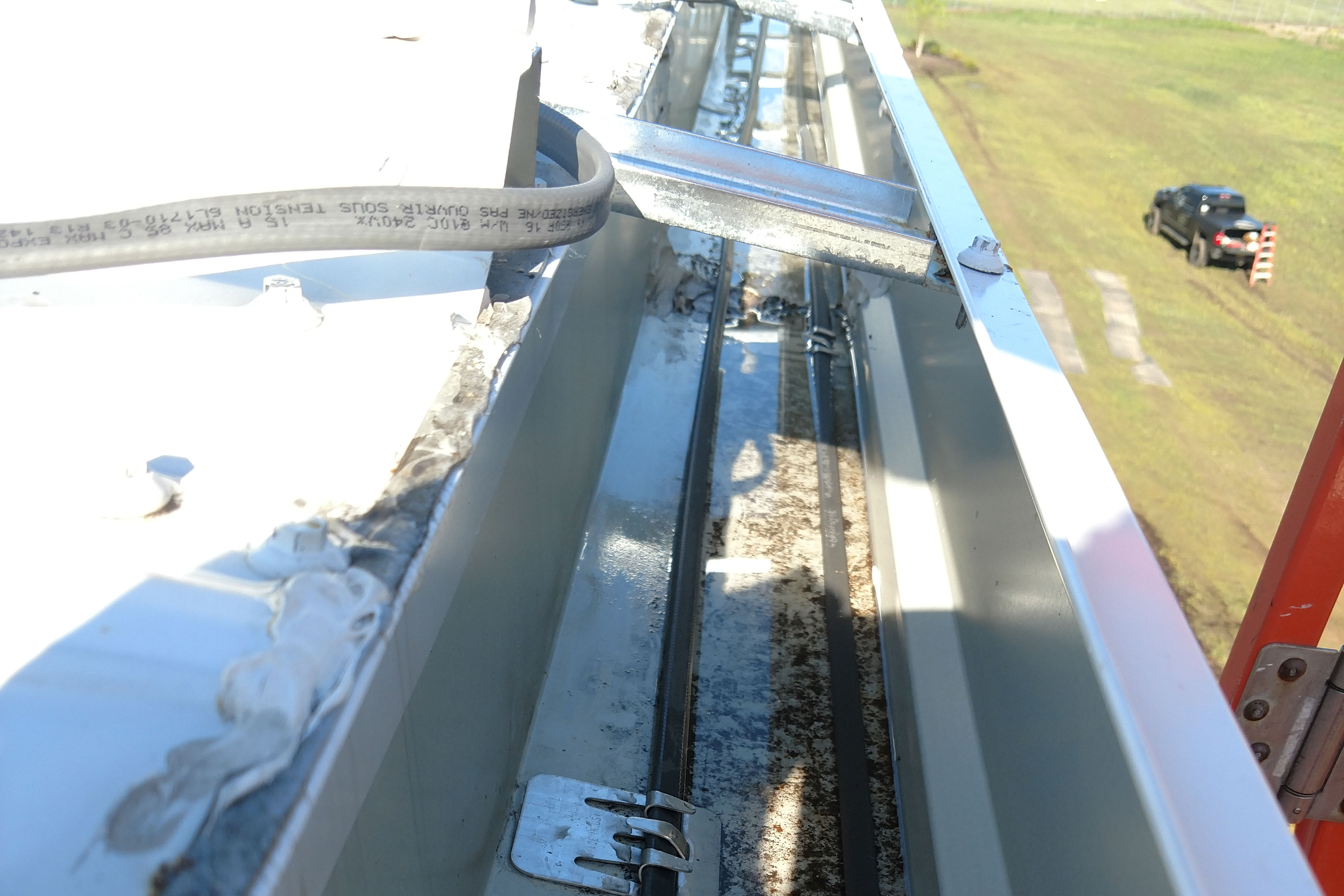
Million Air Syracuse, NY - Parallel Deicing Cables
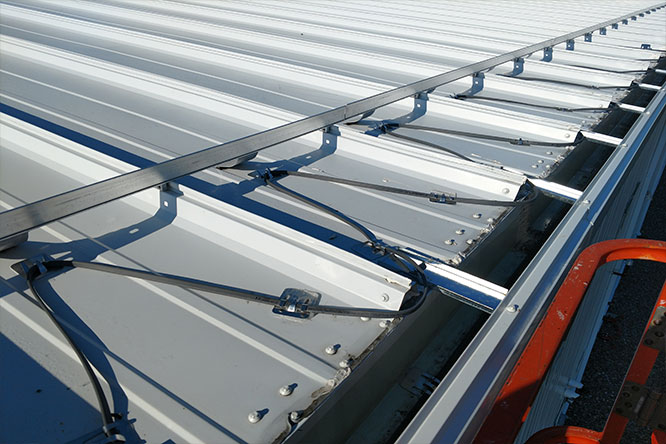
Million Air Syracuse, NY - Aluminum Roof with Deicing Cables
Downspouts
Ice may form in downspouts and prevent melt water from escaping from the roof. We recommend, and will provide, designs that run the heating cable inside the downspout and then back up the downspout.
While we can design and provide systems with T-splices from the roof to the downspouts, experience has shown that without an experienced installer, these splices can be unreliable.
If the downspout ends underground, our designs will extend the heating cable into a heated area or below the frost line.
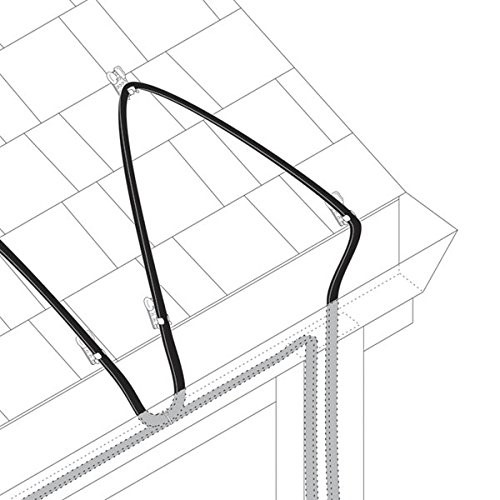
Roof Valleys
Ice dams may form at the valley on a roof where two different slopes meet. To ensure that this doesn’t occur, we will provide a design to run the heating cable down the valley and then two-thirds up each valley with a double run of heating cable. The heating cable must extend into the gutter in order to prevent an ice dam that would keep the water from flowing off the roof.
Product Specifications
Self-Regulating heating cable comes in many different types. We have access to many different options which include:
- 120, 208, 240 & 277 volts
- 3, 5, 8, 10 and 14 watts per foot
- Circuit lengths up to 660 feet
- Factory Mutual (FM) Approved, UL Listed, and CSA certified for ordinary areas. UL Listed for freeze protection of fire protection system piping
- ATEX, IECEx, FM, and CSA Approved for hazardous (classified) areas when used with U Series, HL, DL, and EL accessories
Maximum Circuit Lengths for Roof and Gutter Applications
| 120 Vac | 208-277 Vac | |||||
|---|---|---|---|---|---|---|
| Start Up | 15A | 20A | 30A | 15A | 20A | 30A |
| 40F | 158' | 230' | 270' | 375' | 450' | 540' |
| 0F | 135' | 180' | 270' | 270' | 360' | 540' |
Aluminum Roof Deicing Flashing
Edge-Cutter® is an aluminum flashing designed to be used as a heat conductive plate to aid in keeping snow and ice from roof edges. The system is for use only with self-regulating heating cables certified for use in roof and gutter applications as it is designed to be applied between the roofing and the roof substrate. It can be used with various roofing products such as asphalt shingles, aluminum, steel, and even slate. This system of feathered aluminum channel flashings is an aesthetically pleasing option to prevent ice build-up, icicles, or ice dams in roofing applications without the traditional V-shape outline of the heating cables on your roof.
- 4’ feathered aluminum flashing complete with cap
- Flat and angled flashing available to suit various application requirements
- Vastly reduces total amount of heating cable required by as much as 75%
- Can be cut for customization on the jobsite
- Can be used with many different heating cable systems
- Membrane available for metal roofs
- Will not allow the heating cable to melt or overheat
- Energy efficient when compared with traditional roof de-icing systems
- Fast installation with screws, nails, and/or appropriate adhesives
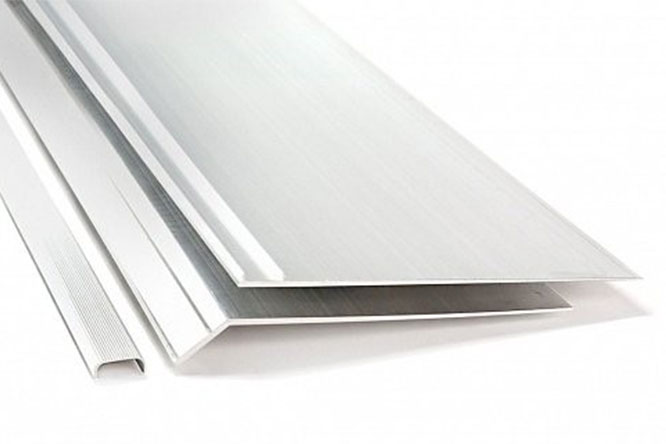
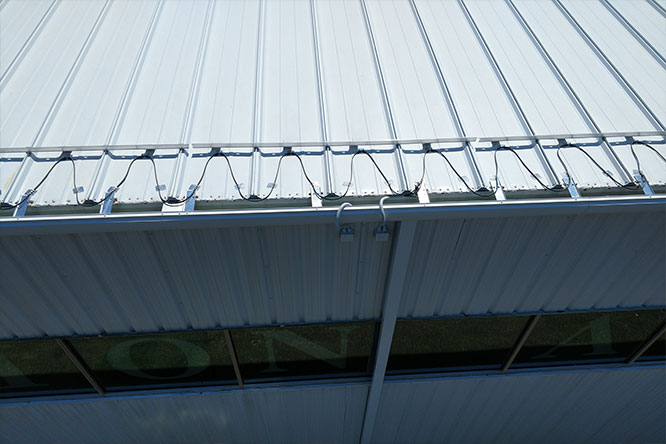
Accessories
Our quotes include our world-class cable as well as a full bill of materials for your project that includes everything you need to install the system.
Bill of materials may include one of more of the following:
- Power Connection Kits
- Roof Clips
- Downspout Hangers
- Splice Kits
- Control Panels
- Thermostat
- End Seals
- Fiberglass Tape
- RTDs and other sensors
What Happens When You Don’t Use Gutters and Downspouts with Electric Heat Trace?
Keeping snow and ice off your roof takes more than just designing and installing the correct electric heat trace system. Having proper insulation in your building and correctly installing gutters and downspouts are just as important in keeping your roof safe from snow and ice damage.
Many times, building owners will make the choice to not invest in gutters and downspouts with the view that the electric heat cable will just melt the snow and ice and the water will then freely run off the roof and on to the ground below.
Unfortunately, that is not the case as you can see from the pictures below.
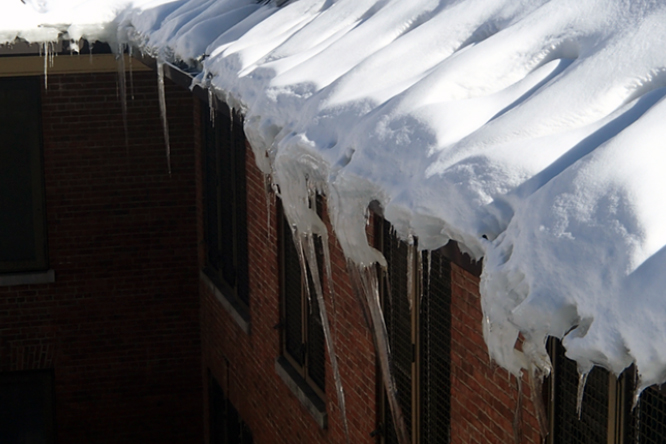
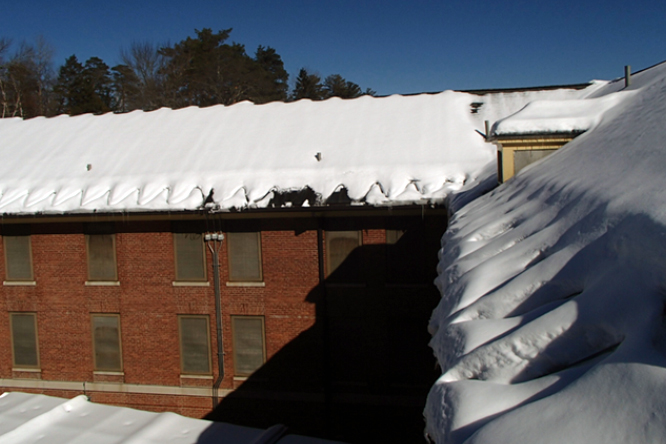
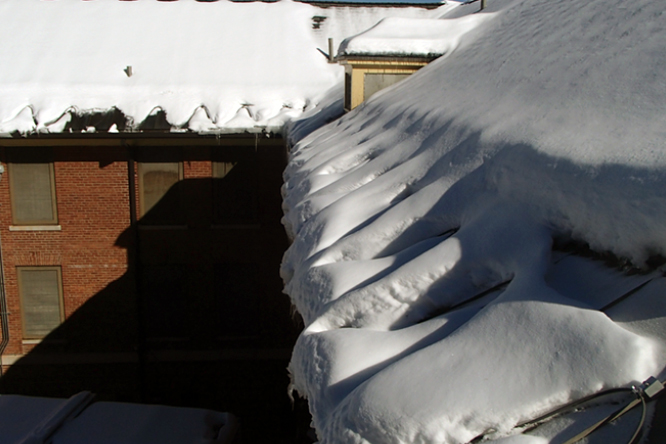
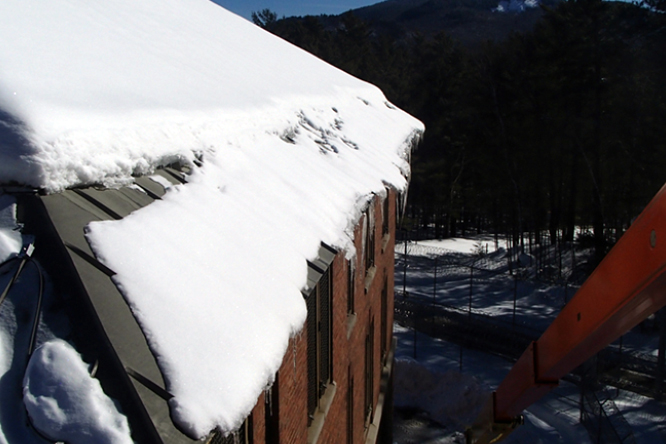
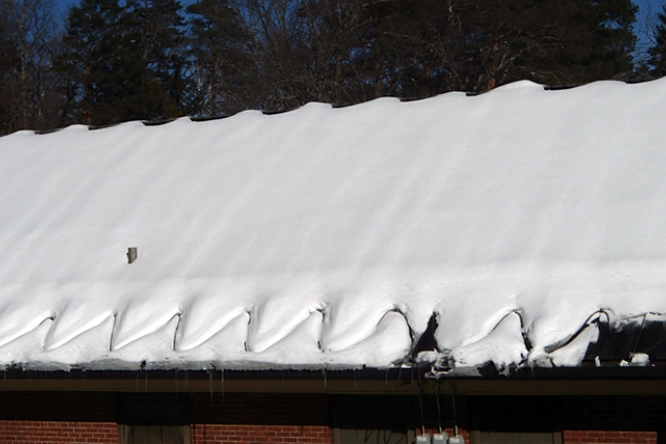
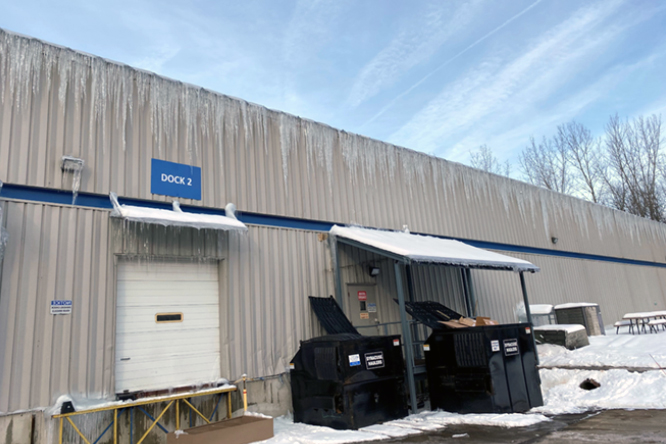
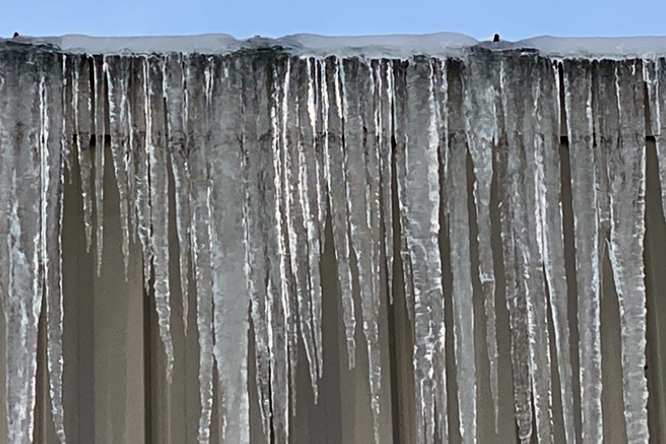
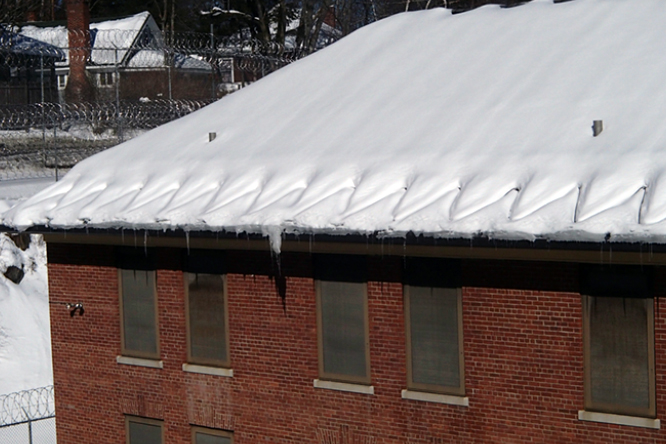
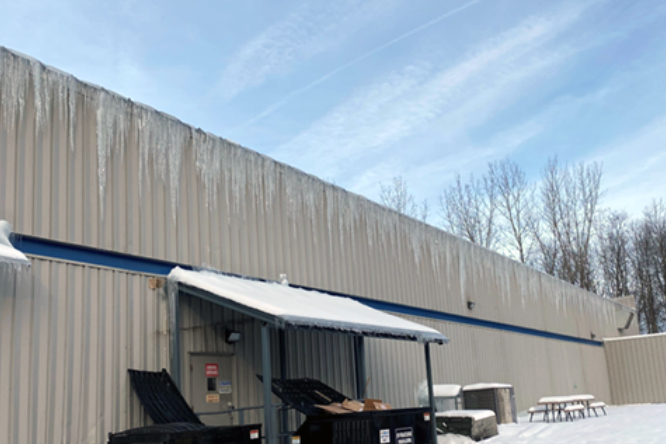
What happens is that the heat trace does melt the snow and ice that it comes in contact with but then as the water begins to runoff the roof it changes temperature quickly to back under freezing and will cause ice to form beginning just under where the heat trace ends. Therefore, it is critical to have a robust gutter and downspout system as our systems also include lining the gutter and downspouts with heat trace in order to assure that the water can freely move down and away from the building.


